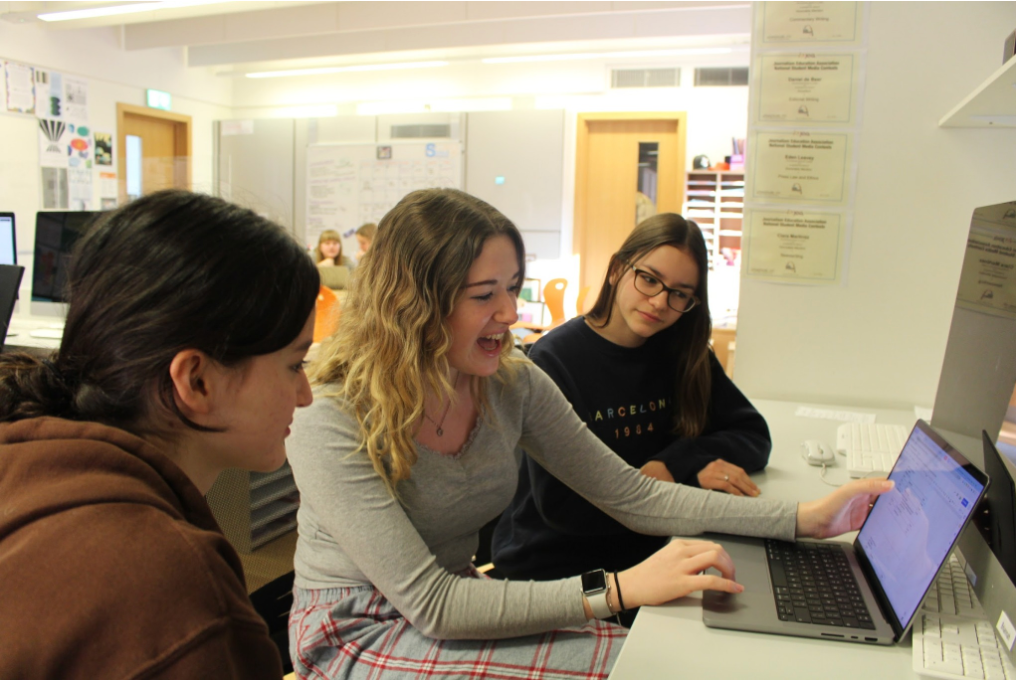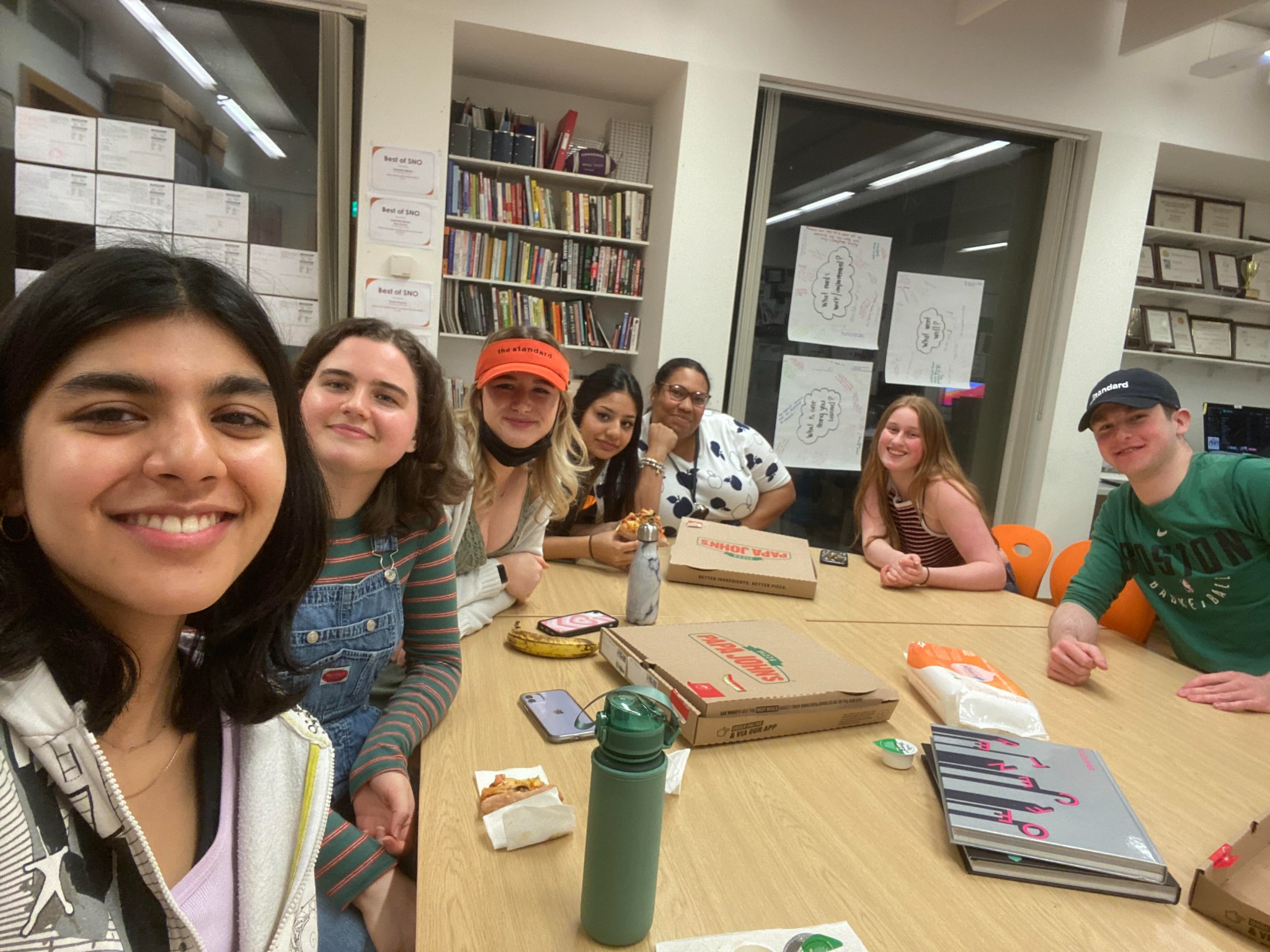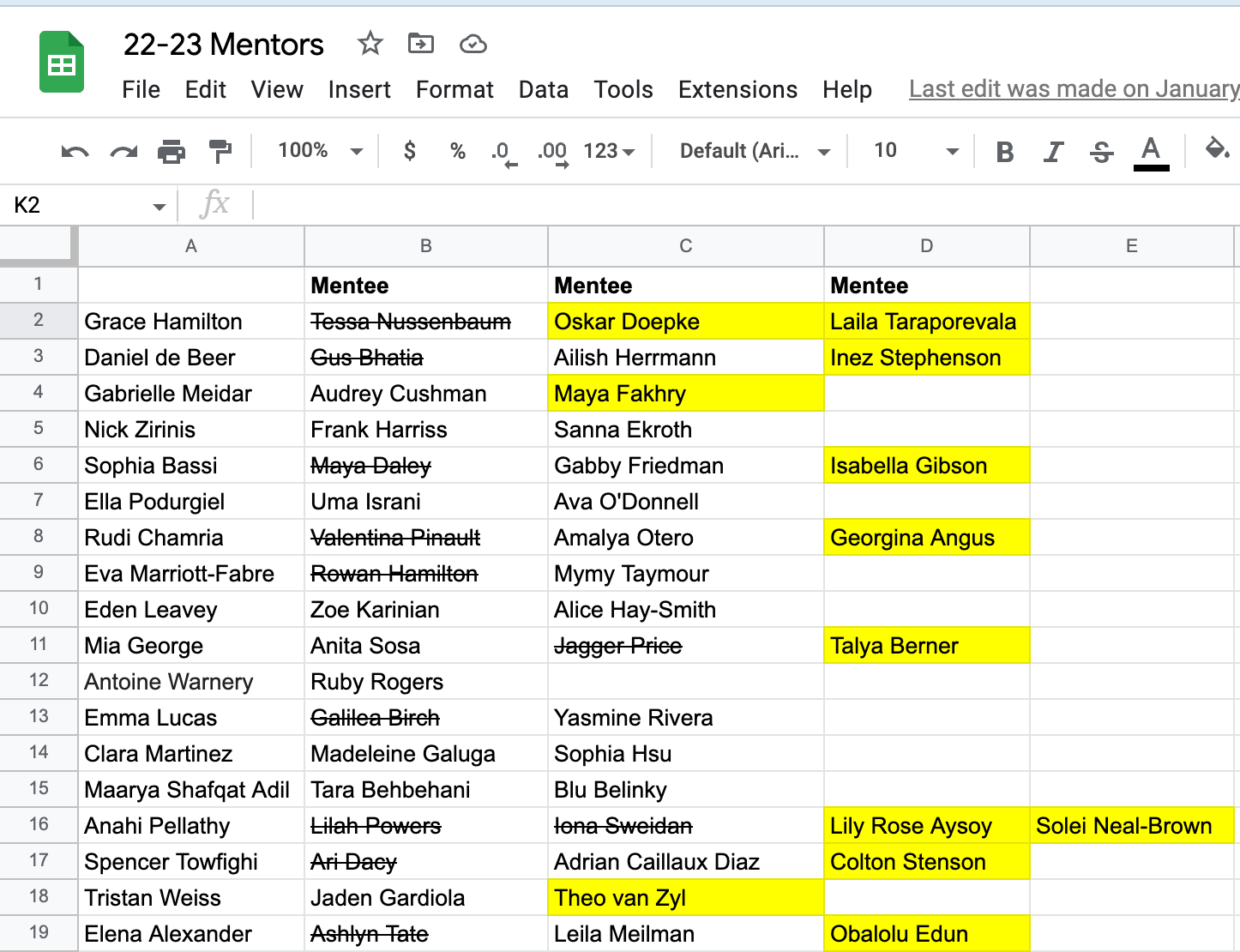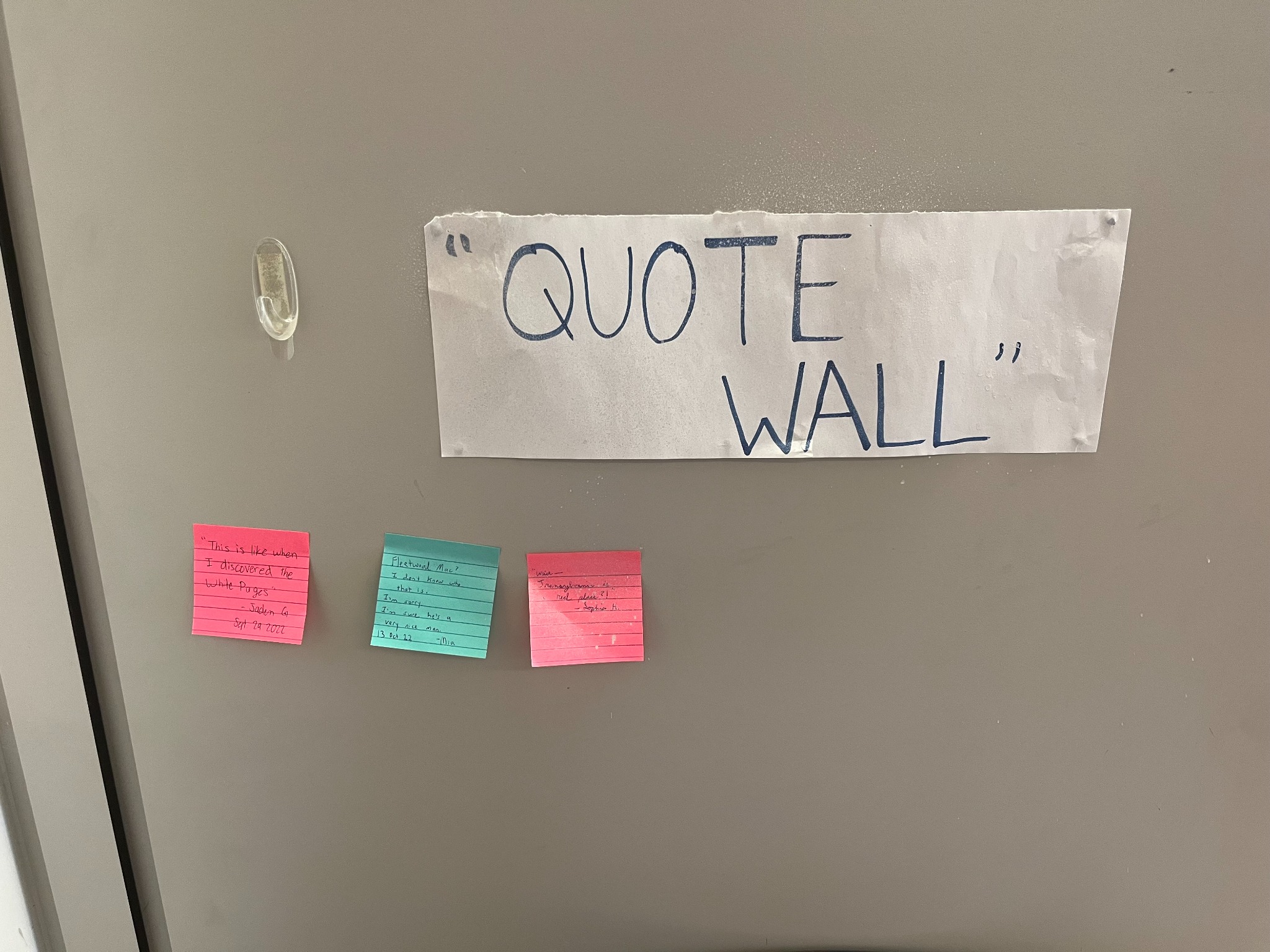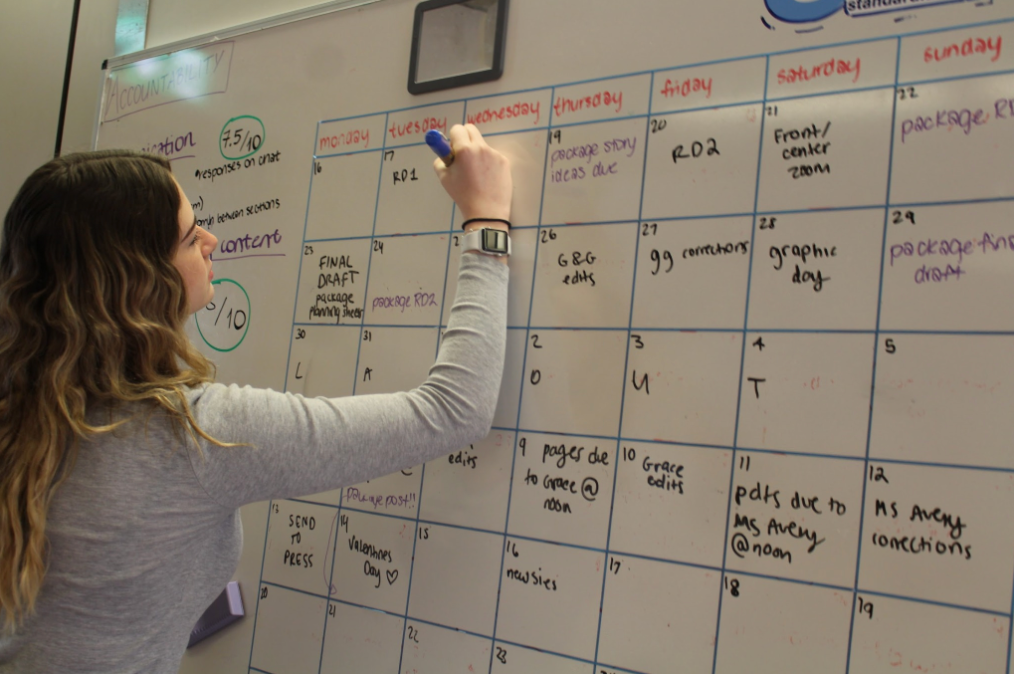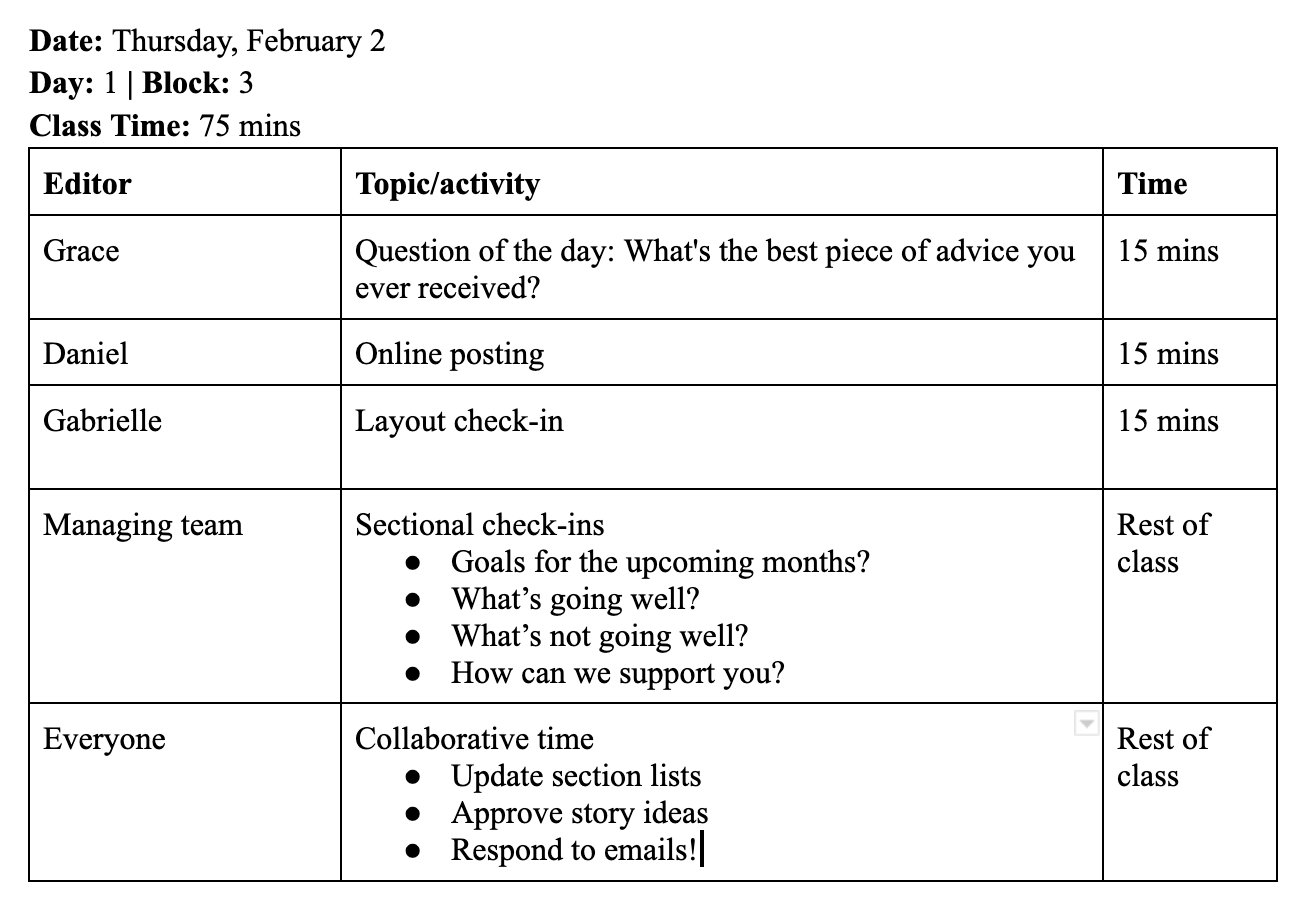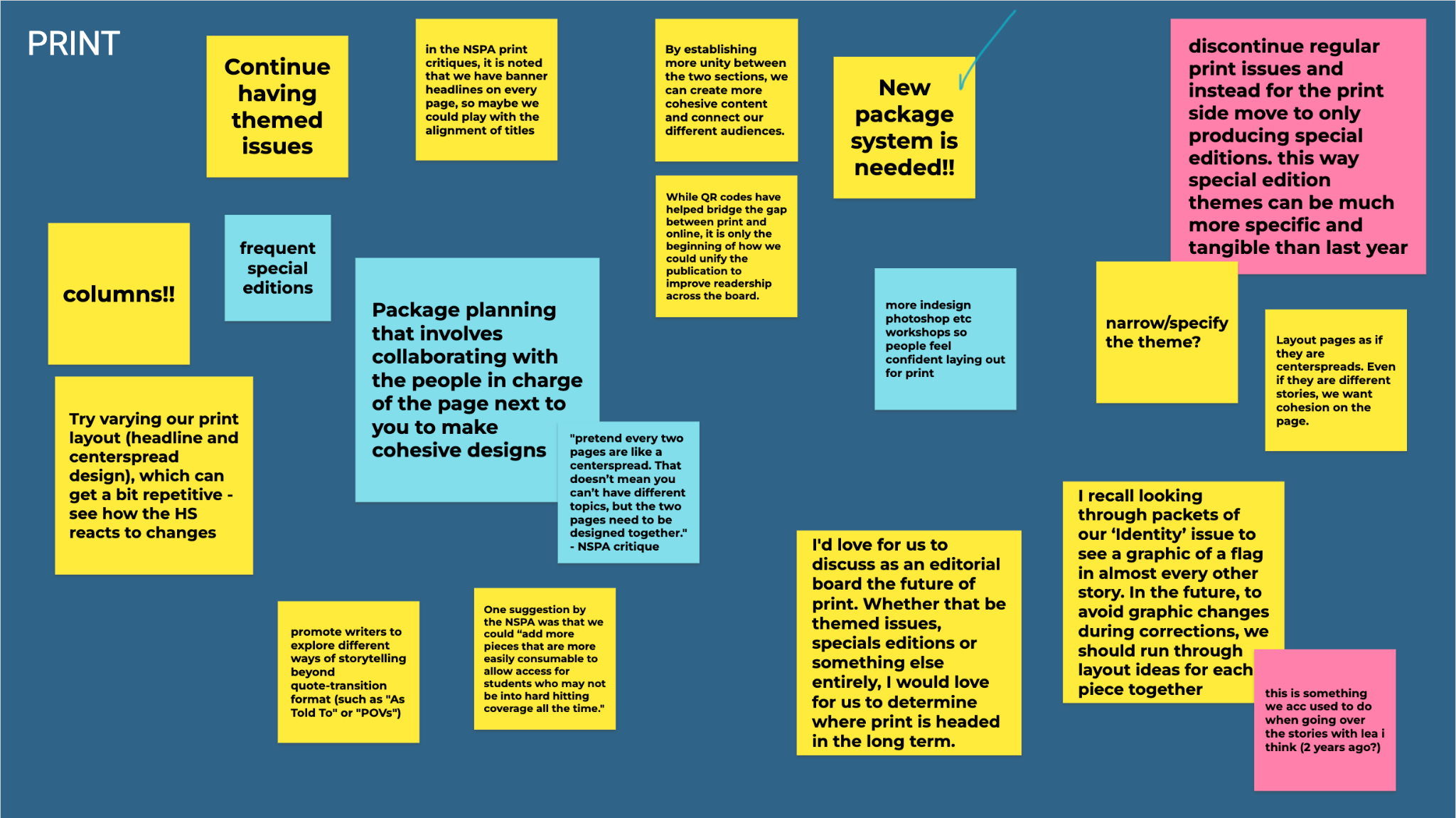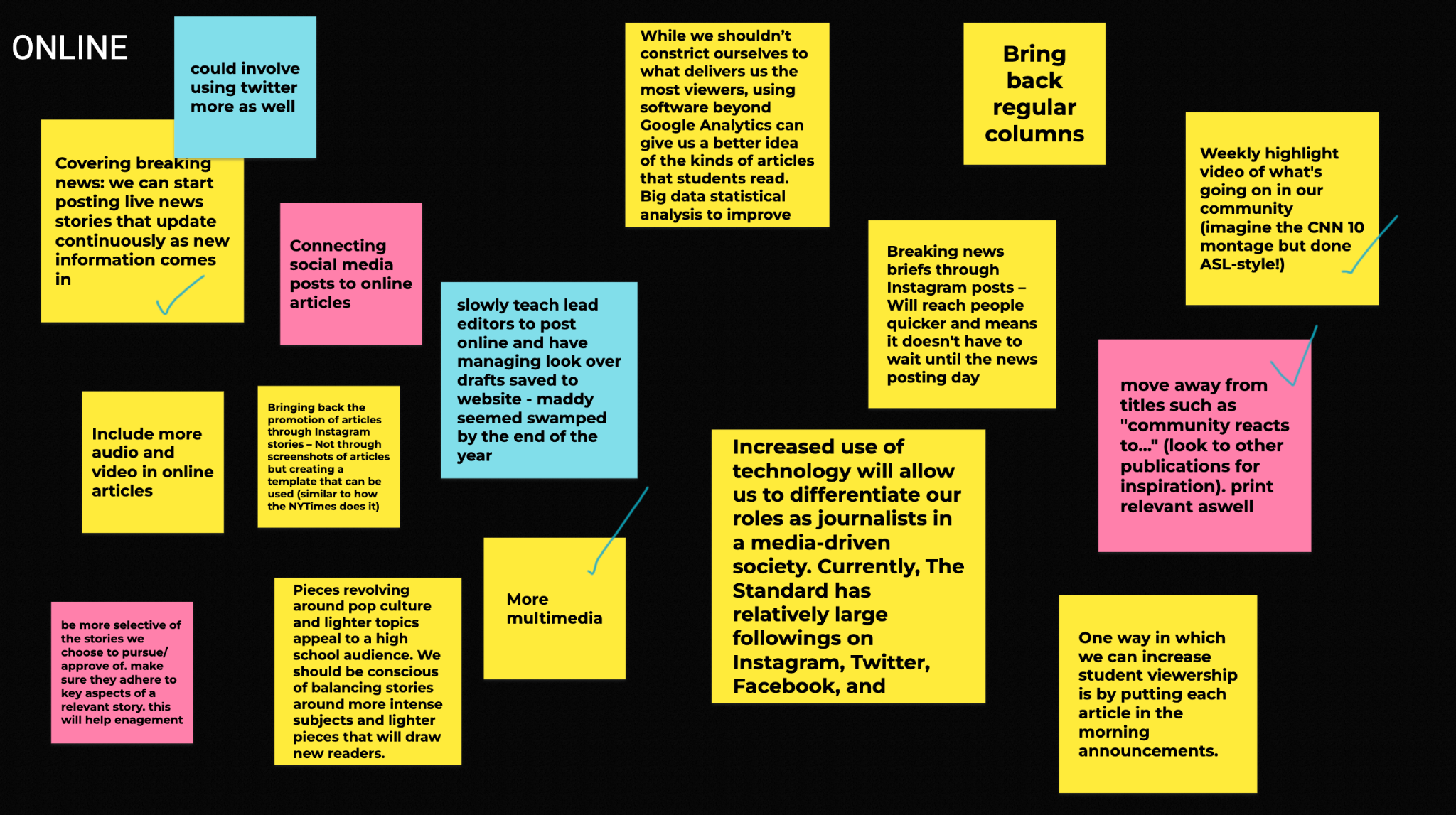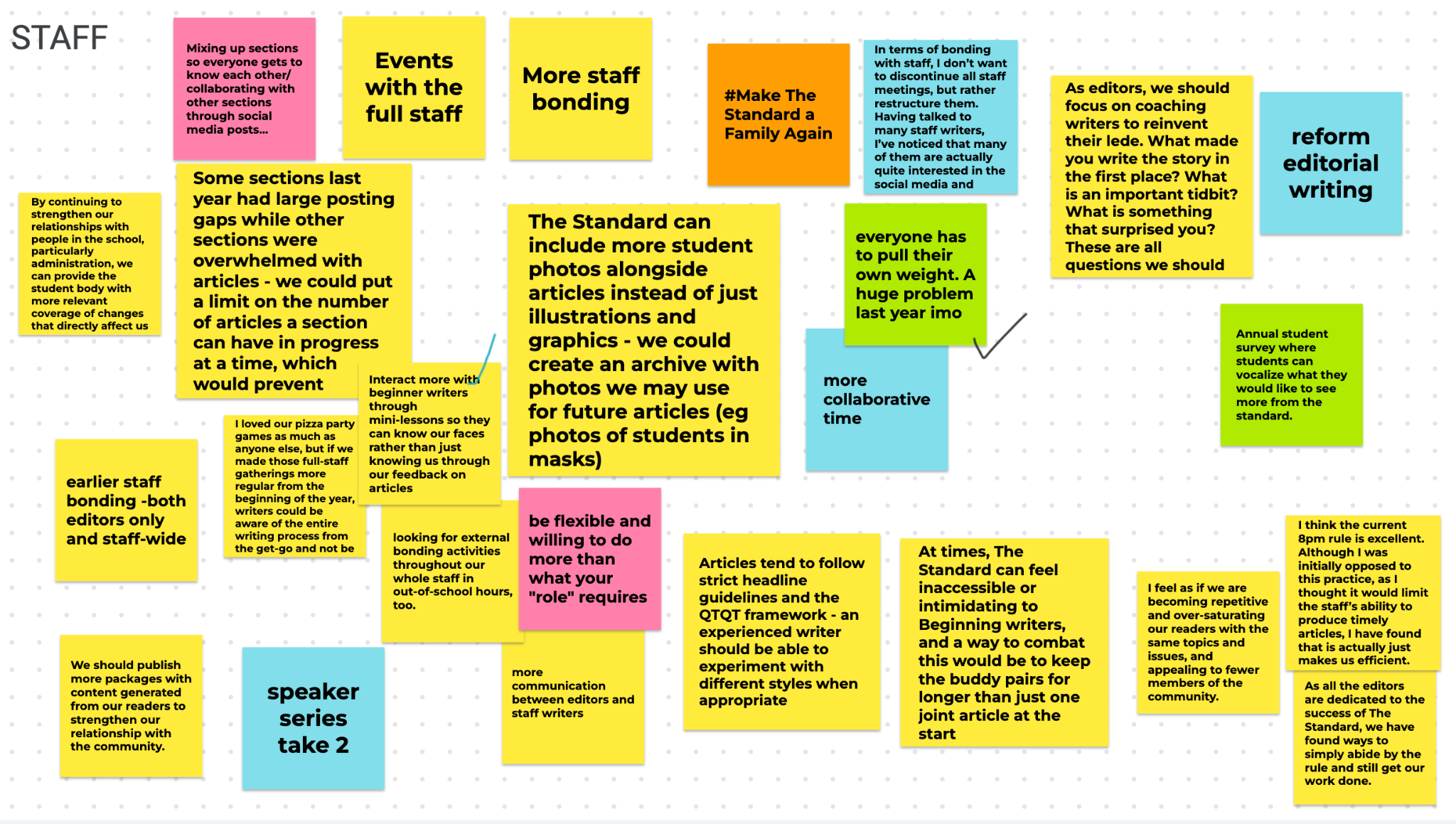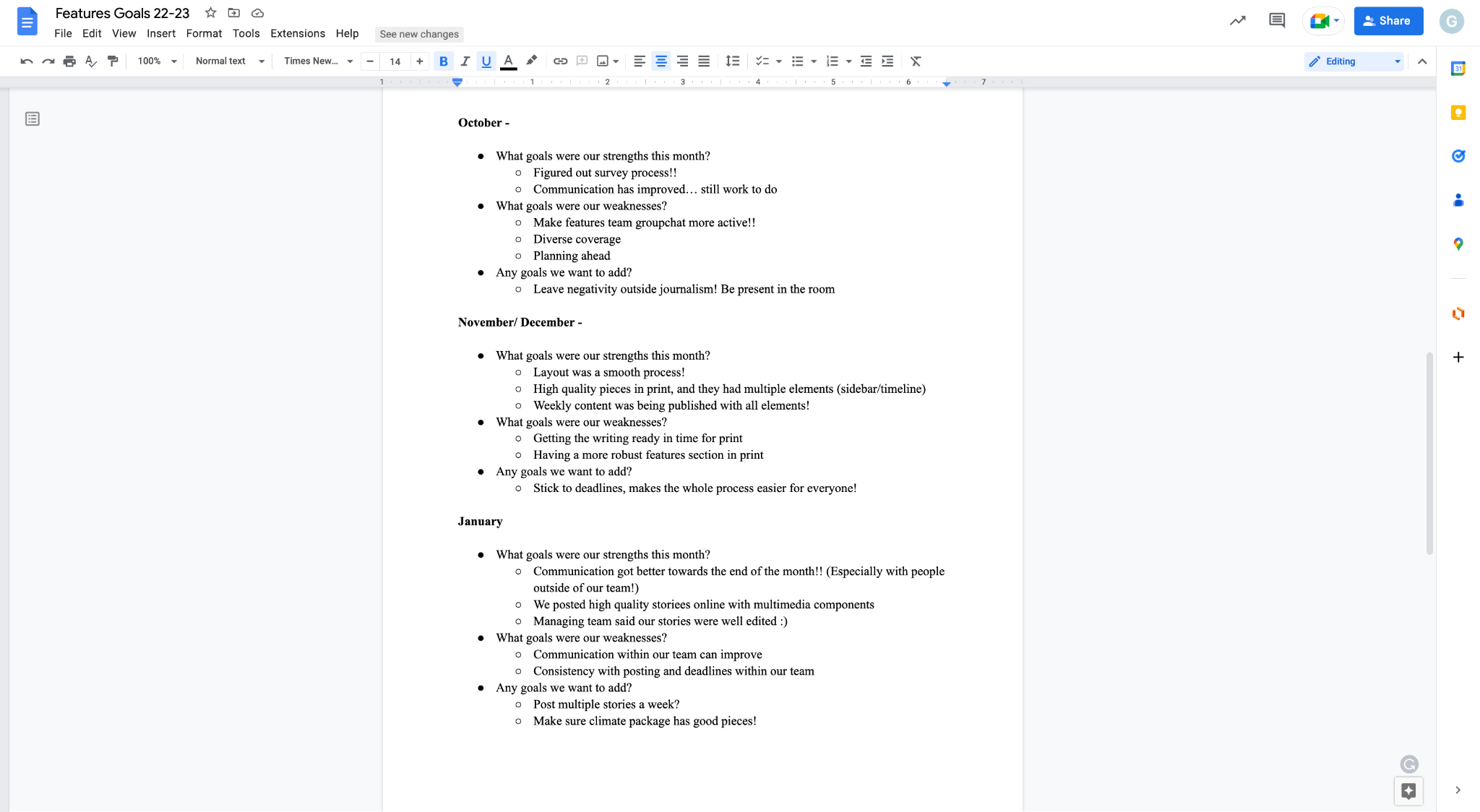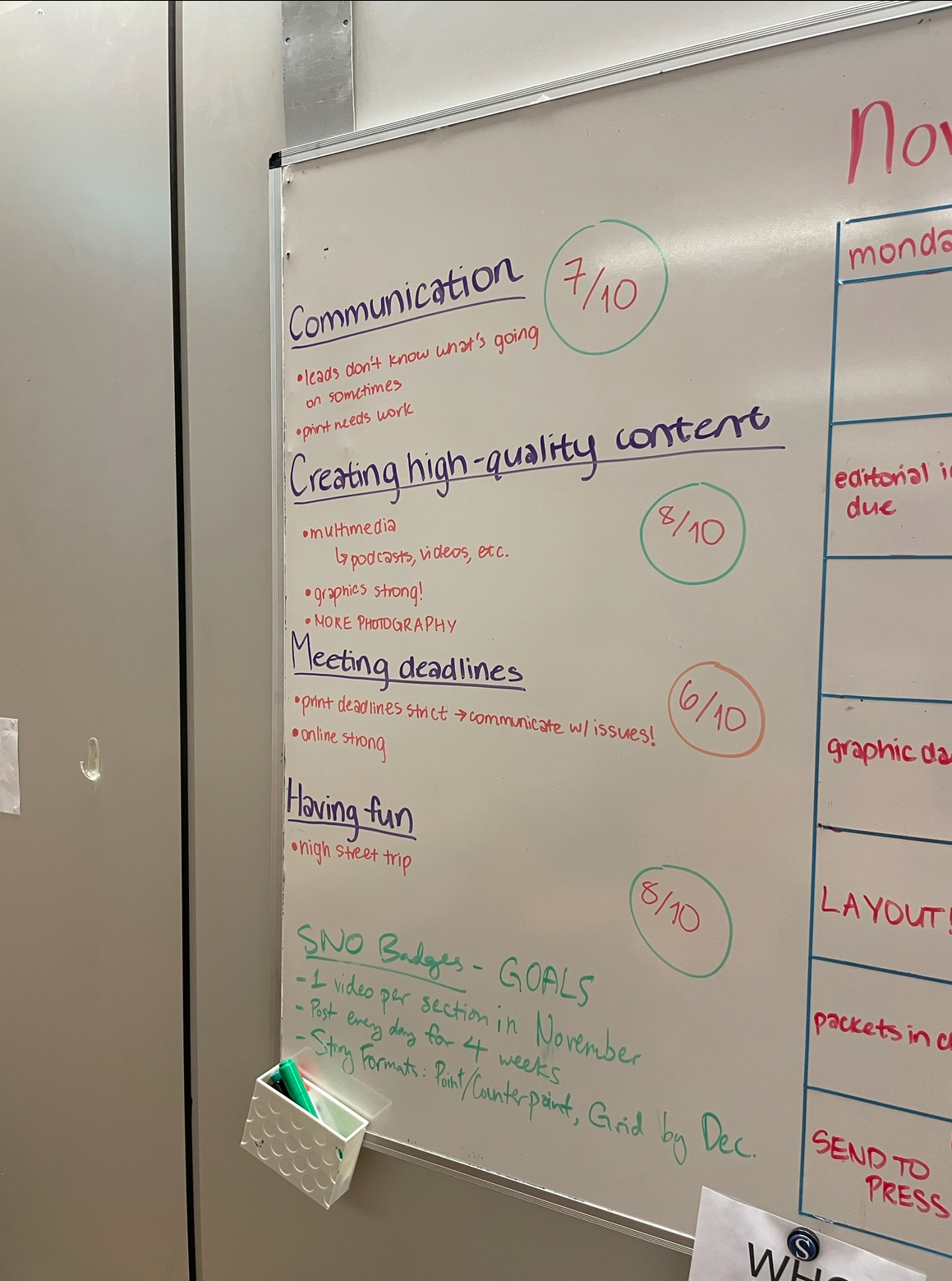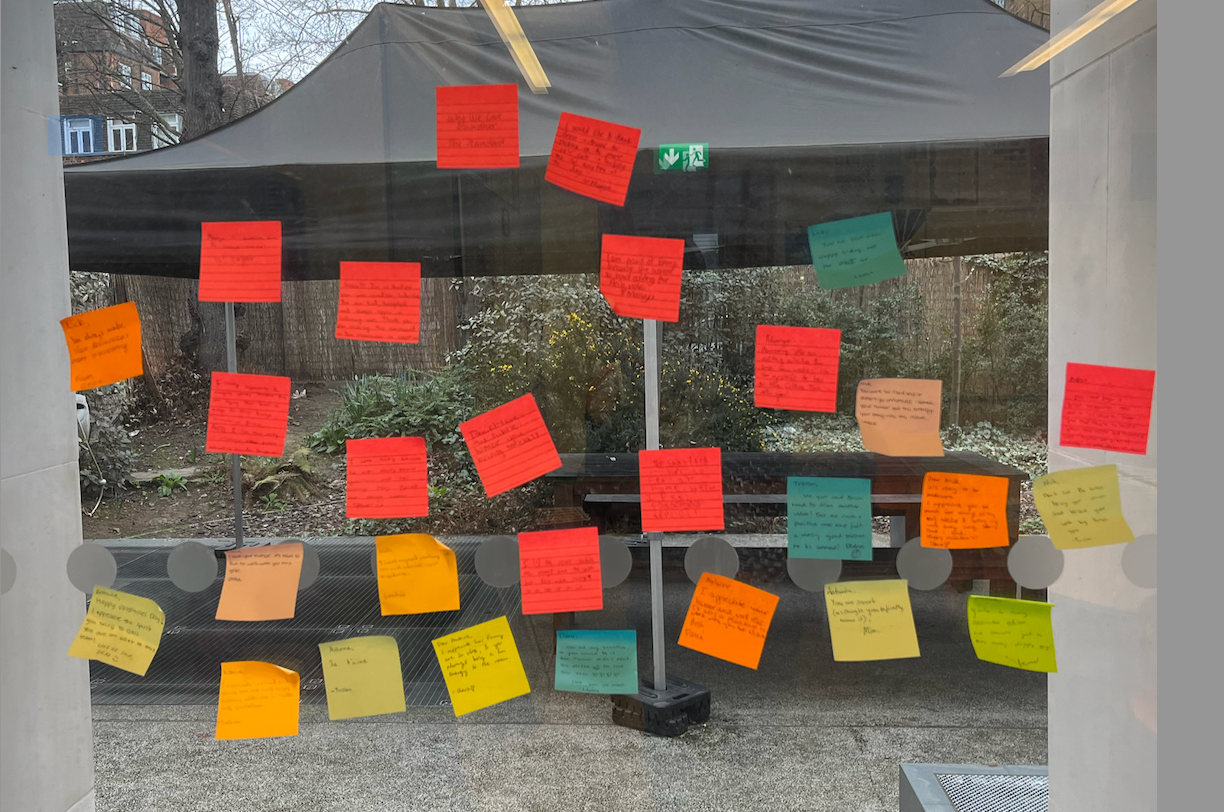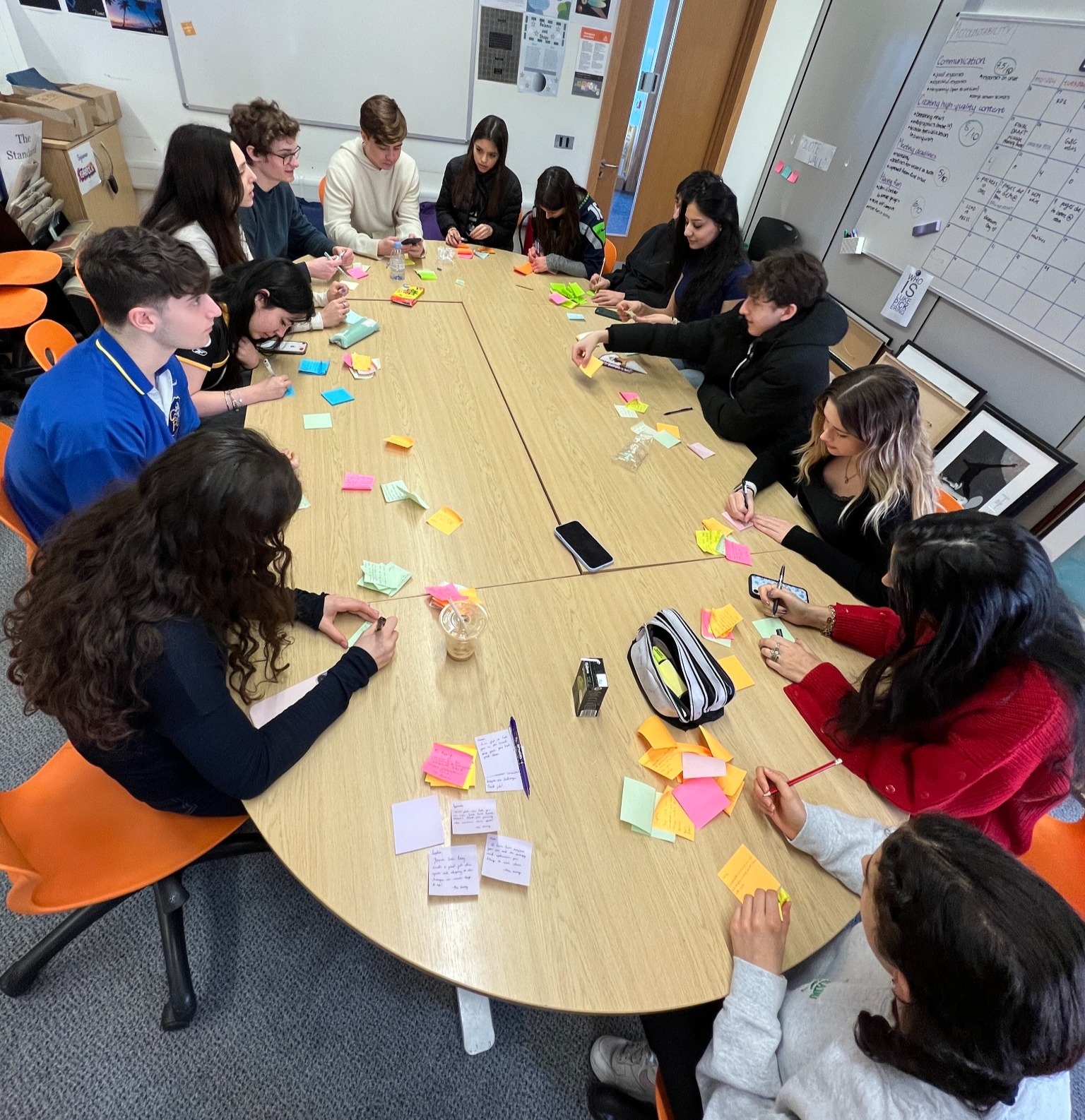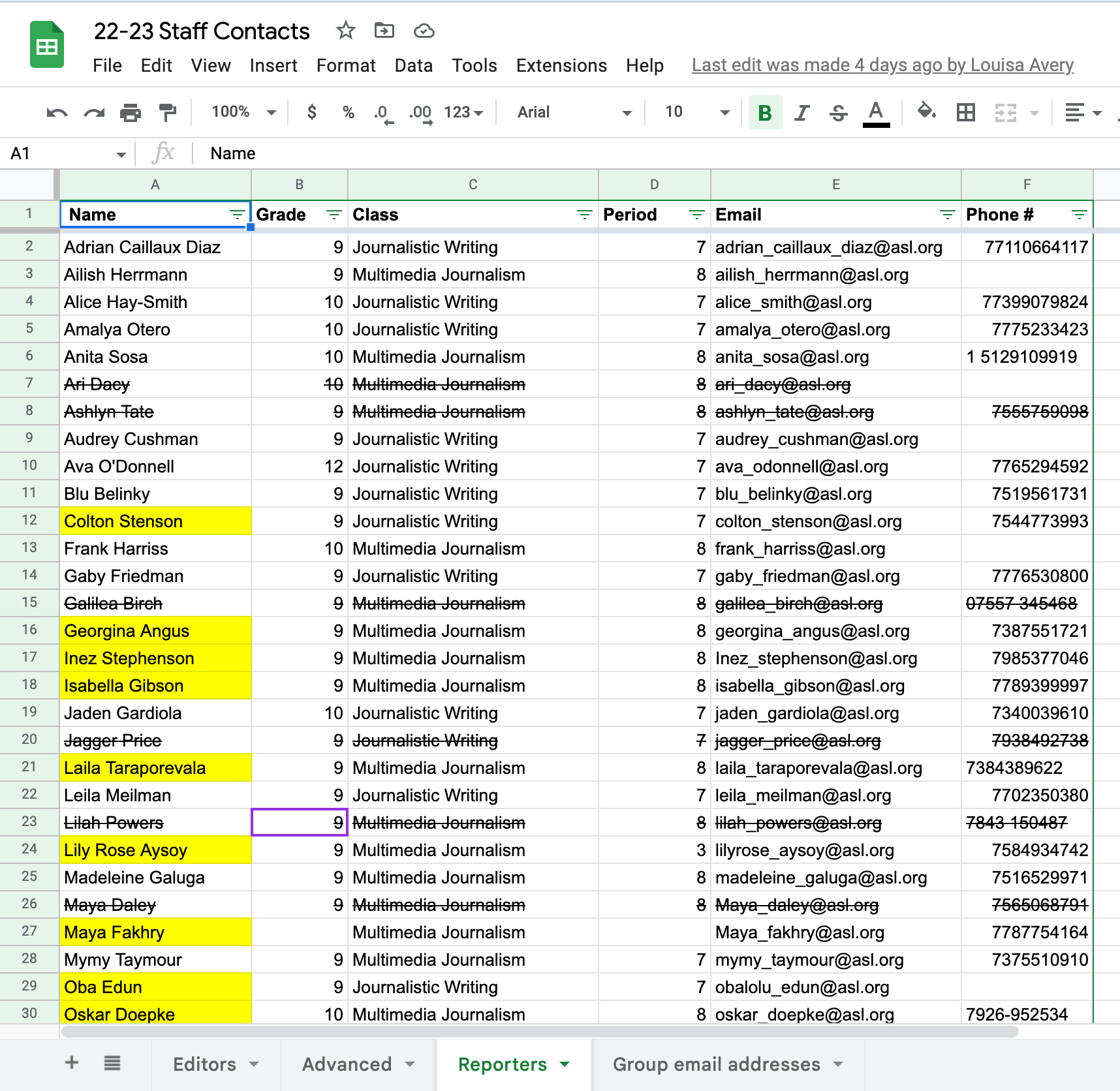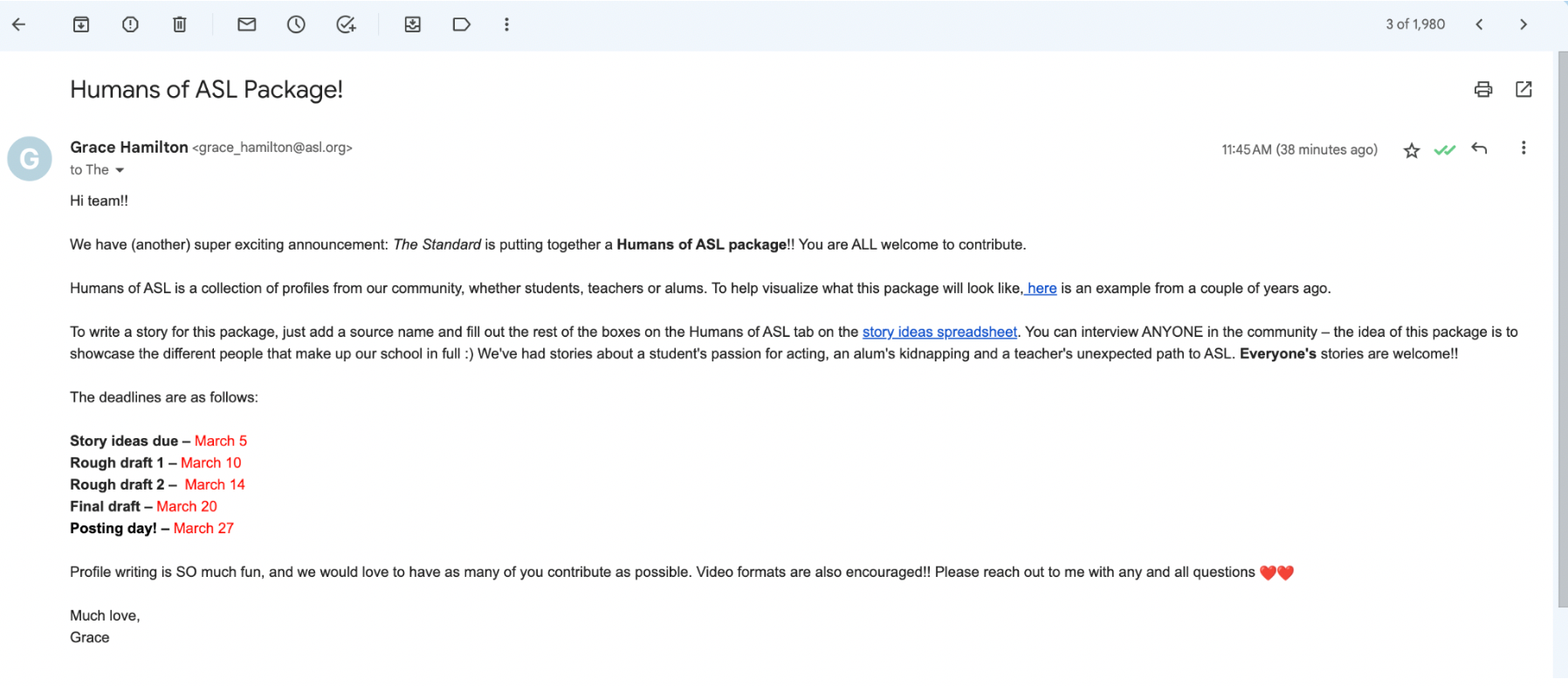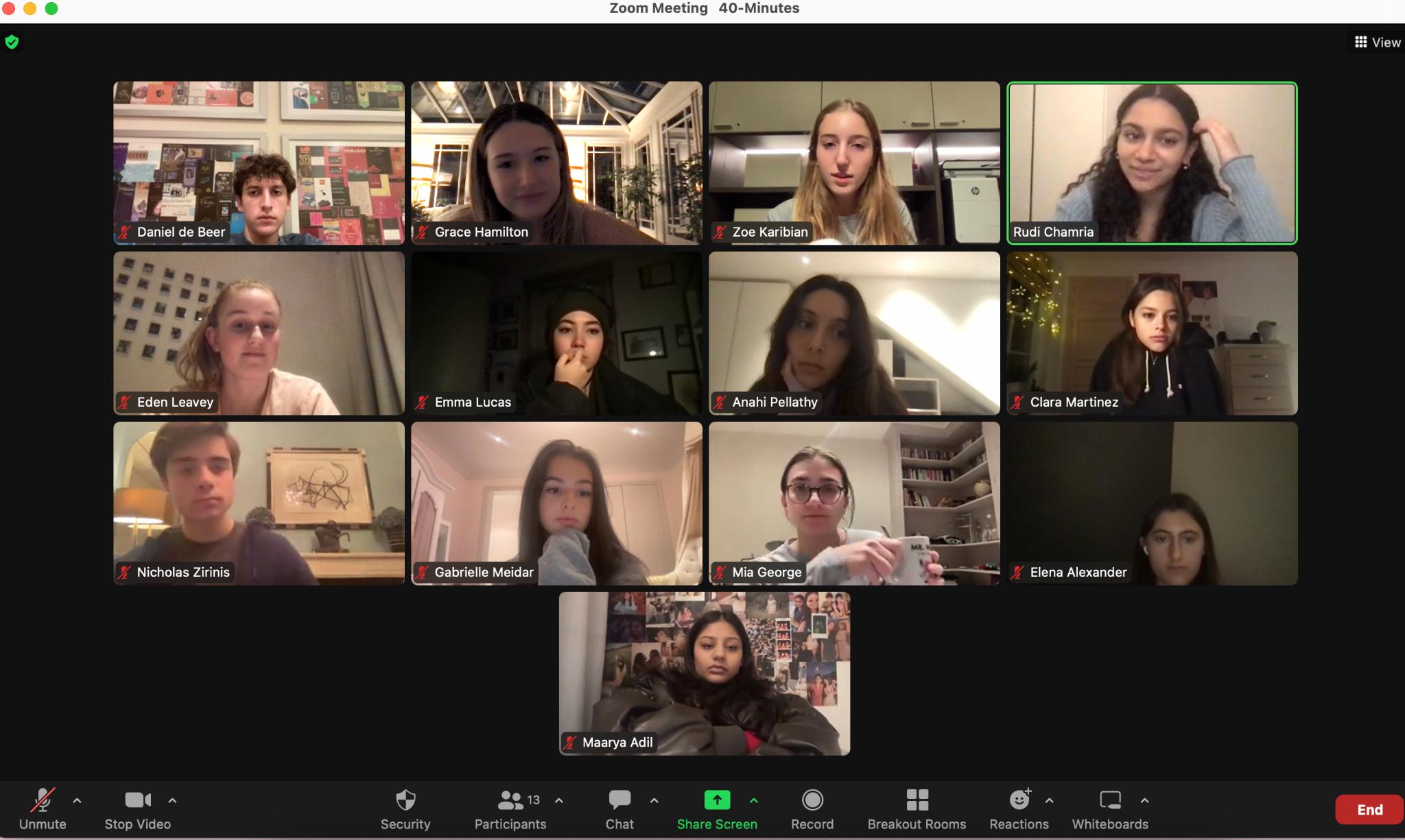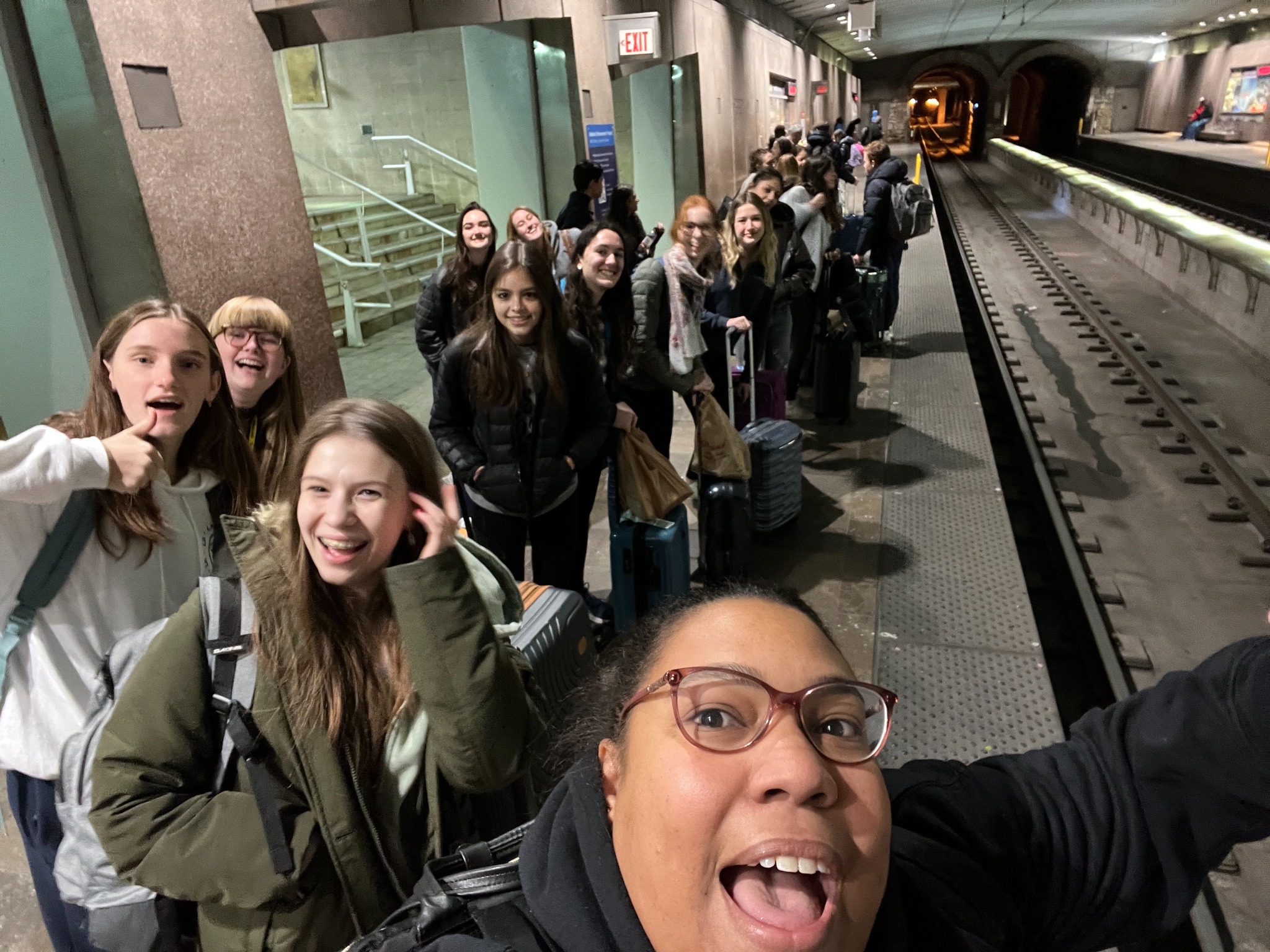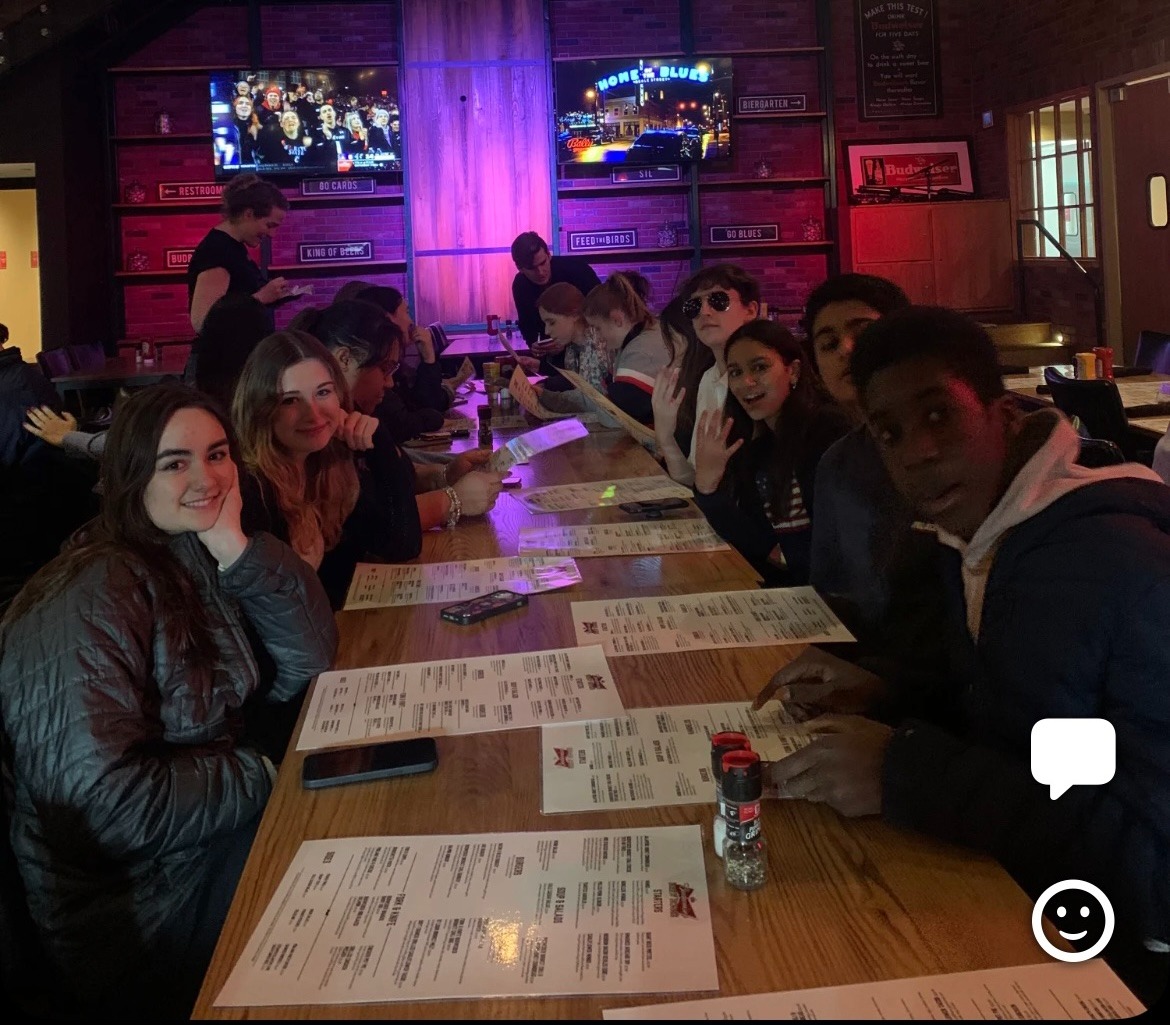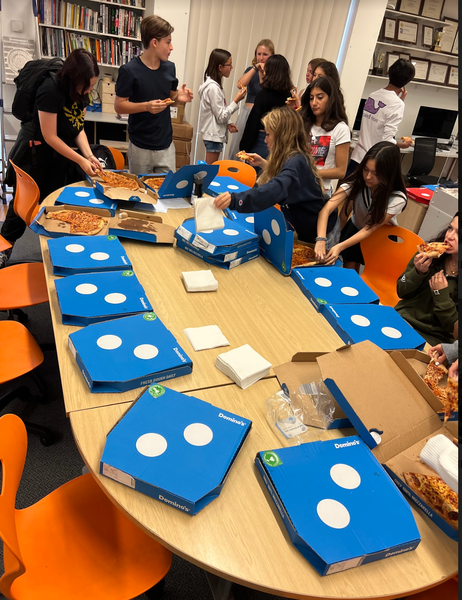

While being a journalist is something “I” love, the real power of The Standard is what “we” accomplish together. Being a part of this high-performing team has been transformational. I am a journalist 24/7. But, the team has converted that love into purpose.
Grace is an extremely passionate leader, not only because of her strong organizational skills, but also because of her ability to always prioritize the entire team’s success and development. She facilitates inclusivity and team bonding both in and outside of the class and is truly a team player.”
Grace has a rare combination of vision, creativity and strategic thinking. She has an unwavering commitment to delivering quality journalism and has inspired everyone on staff to follow suit.”
Grace is so open and kind – I know that I can always go to her for help or support and she will give me the best thoughtful advice and guidance. She is a great listener and communicator and you can really tell that she cares about everyone she works with.”
Grace drives her team to reach its collective goals with enthusiasm and compassion.”
Grace is always willing to help any member of staff, leads by example by regularly creating stories spanning sections and is very receptive to feedback.”
It goes without saying that Grace is an incredibly talented and hardworking journalist, but I think what truly sets her apart is her friendliness and willingness to help anyone in the room. She handles great responsibilities with an unparalleled professionalism that holds together The Standard staff, balancing the priorities of the publication with being understanding and empathetic.”
As Editor-in-Chief, I serve my staff and ensure “we” precedes “I.”
To serve as a backbone in supporting editors to become the best version of themselves, I act as a coach and facilitate the connective tissue of the publication. I work to draw out the best of everyone’s capabilities – facilitating communication, coaching both skill-wise and interpersonally and delegating responsibility.
To facilitate the voices and leadership of staff members, I oversee the publication as opposed to running it. I seek to discover my own purpose through the staff members I manage, growing with the staff and because of the staff. That growth lies in crediting others for success and taking personal responsibility for failure.
To evoke passion, quality and creativity, I strive to cultivate a culture of trust and courage to disagree, where I express appreciation for my team and overtly value others’ opinions. Editors should feel as if they can be brutally honest in their offering of both ideas and feedback, that I will listen and that tangible action will be taken.
Cultivating a strong, supportive culture on The Standard – one in which passion, joy and humor are key elements – is critical.
A key core value is respect. I encourage respect for our writers, our sources, our editors and our deadlines. It isn’t easy, but I have led explicit discussions about our code of conduct, including how we can support each other and imbue shared values in our team’s DNA. To monitor the upholding of these values, I circle back and review our goals periodically.
At the beginning of the year, I walked through likely scenarios – disagreement between staff members, inability to meet deadlines, constructive feedback struggles – and discussed ways to handle each to equip every editor for productive staff interactions.
The beauty of The Standard lies in its familial dynamic, with a remarkable sense of community and camaraderie. Sharing morning pastries, engaging in staff bonding and late-night layouts are merely examples of our collegial environment.
Question of the day is another tradition I’ve continued, where our staff begins each class with a fun question. Sometimes the question asks to compliment another staff member, while other times it’s a simple “Ketchup or mayo?” No matter what happens prior to stepping foot in P-101, beginning class with the question of the day never fails to boost my mood. These questions not only establish a routine but promote laughter, introspection and rapport.
I organize staff lunches monthly, where all 63 members of the staff – across all four classes – gather to eat lunch together, check in with editors and have some fun. Earlier in the semester, we did a marshmallow house building activity and a game of "find five things in common." These lunches help make younger reporters feel as if they're truly a part of the team and give editors a concrete space to form meaningful connections with those they mentor.

This year, I expanded reporter-editor collaboration through year-long mentors to further unity and the sharing of experience. Each reporter is paired with an editor, who meets up with them occasionally and is always available to answer questions. Providing a space in which younger team members seek guidance and support solidifies a cyclical, closed-circle journalism family.
Earlier in the semester, I reached out to my buddy making it clear that I was there to any of her questions and walk through publication processes. I've since worked with her to grow her interest in photography, showing her the ropes with our cameras along with the ins and outs of caption writing.

Every Tuesday and Thursday, I hold open lab hours for the whole staff. This is a chance for reporters to come in and ask questions or chat about anything they may need. I am always in the lab those days, typically with at least one other managing editor.
To appreciate the simple moments with each other and boost team rapport, we also have a quote wall where we paste sticky notes of funny sayings in our newsroom.
Communication of expectations surrounding story deadlines, content goals and publishing timelines enables the staff to plan and organize their time effectively. Because expectation clarity lies at the core of a successful publication, I created a master guide outlining our explicit role as journalists on this team.
A few key documents included under the master guide were section editor responsibilities, lead editor responsibilities and habits of an effective editor. At the beginning of the year, I set aside class time to walk through each element of these documents, where all voices were heard and embodied to ensure expectations are clear and universal. By working through each resource to revise, reflect and come to a collective agreement, each editor then signified their commitment and understanding.
A key component of leading my editor's class is organization. Every night before class, I have a 15-minute meeting via Zoom with my Deputy Editor-in-Chiefs to plan. By meeting with the two of them, I can understand what they need from me, what the editors for both print and online require and what would be most useful for class time. We stick to this class structure, ensuring that we are productive and set out time for what the staff most requires.
Mental health is my number one priority when leading my staff. Encouraging reporters and editors to seek help when experiencing challenge is imperative, and I have worked to foster a culture of comfort and openness. Part of that is leading by example – when I am struggling myself, there is vulnerability and I will ask for help. Providing opportunities for editors to openly share, namely through one-on-ones and sectional check-ins, are practices I implemented that facilitate mental health and ensures journalism doesn’t add additional anxiety.
As the Lead Culture Editor in 2021-22, my section received an influx of 30 online articles – an unprecedented number of articles for one section to manage. Typically, the entire publication doesn’t have that volume of articles in circulation. We worked incredibly hard to organize, edit and post content weekly. In doing so, my section editor became extremely overwhelmed. We sat down to talk during a week when the workload was exceptionally high, and I encouraged her to take a week-long break to rest, recuperate and come back stronger. When she returned, the section thrived and we were able to manage articles while maintaining the expectation of boundaries.
I constantly check up on my editors. I will often FaceTime editors or simply pull them out of the newsroom when stress is high so they can vent and take a breath. Earlier this year, an editor consistently failed to meet deadlines and was uncommunicative with her lead editor. I reached out letting her know that it’s okay to take a break and that the entire team is here to support. After having chats with both her and her section, she has massively improved in communicating when she is overwhelmed and needs extra help.

Toward the beginning my time as Lead Culture Editor, one of my section editors operated almost as if she independently ran our section, disregarding many of the functions of our team. I took a couple of days to process and reflect, trying to unearth the root of her behavior and what actions I could take to tactically change it and lay the foundation for a successful year. After reflection, I boiled it down to the value of “we” vs. “I” – the team vs. the individual. I sat down to have a discussion with her about the power of “we” and why, as she steps into this leadership role, everything is about the team.
It was an incredibly challenging conversation to have; I practiced multiple times before to flesh out every word. But, since then, I’ve noticed a massive difference in her interactions with our section and the staff as a whole. Without its members considering the “we” in every interaction, The Standard cannot properly fulfill its role in the community. We can’t ensure everyone’s voices are heard when members of our team are not functioning with a mindset transcending the individual.
For print, compiling a checklist addressing recurring mistakes observed in packets mitigates repeated problems and enables collective advancement. Before beginning a new cycle, we return to our Jamboard reflection as well as the recurring mistakes list.
For online, we engage in a similar reflection about daily posting. Monthly, we celebrate consistent posting, multimedia use and the hard work required to maintain our online publication.
It is equally important to consider team dynamics beyond the content of each publication. This is a key part of our reflection and goal-setting as well.
To organize sectional goals, I created a goal-setting document for each section that I dedicated class time for editors to reflect, revisit and set new areas for improvement. During sectional check-ins, we check back on those goals and give space for honest feedback.
Weekly, I pull my lead editors aside and engage in an accountability check. At the beginning of the year, we outlined the four core goals of our publication, and in these check-ins, we evaluate our strengths and weaknesses in each area. This way, we can quickly identify where we fall short and work to improve that area for the next week.
Celebrating success boosts morale and acknowledges hard work. Whether pizza parties after sending to press or complimentary Jamboards, celebrating as a staff is crucial. We celebrate the little wins as well as the big ones; positive energy breeds more positive energy.
We occasionally do compliment Jamboards as well, where each editor has a dedicated slide and we go through adding positive, uplifting notes:

After sending to press or winning an award, we take a class day to take a staff coffee run. While simple, this time spent as a team outside of the newsroom reinforces our accomplishments and boosts motivation.
Group chat texts are similarly important to boost morale. Whenever possible, I will shout out an editor for a quick turnaround or a Best of SNO award received. Sending encouraging texts motivates the team to keep up good work and allows editors to support their fellow teammates.


Congratulating reporters on their individual work is equally important:

At the start of the year, our team experienced some difficulty getting in the groove with efficient communication. I ended up bringing in Carrie Fletcher, an expert in professional team building and communication, to hold a 75-minute session all about teamwork. In her workshop, she first explained the different styles of communication and how to meld them together within a team setting. We had turn-and-talk discussions with other members of the team to understand their personal work styles and identify individual areas for improvement for the collective good.
Aside from utilizing our digital platform for editing communication, I encourage direct contact through the staff contact spreadsheet. Editors are in contact with reporters at all times, available to answer questions and provide constant support.
The value of mentorship cannot be understated. To create this sense of mentorship in the editors class, I've encouraged my editors to present mini-lessons to the class. This year, we've had presentations on types of leadership, opinion writing and open-ended questions. Section editors and leads often catch errors that never make it to the managing team. Thus, by teaching the class about the ins and outs of supporting claims or correct image attribution, these errors are mitigated and others feel empowered to learn and grow both journalistically and as leaders. These also serve as a powerful way to remind editors that we all have something to learn from each other. Below are a few examples of mini-lessons presented:
During my time as Editor-in-Chief, I have led the creation of two in-depth packages: "Confronting the climate crisis" and "Humans of ASL." Rallying the team around the creation of content that matters is so important to me as a leader in student journalism.
Organizing the climate change package involved sending staff-wide emails, group text reminders and frequent class check-ins:

To organize each piece, I created a color-coded article tracker and updated it daily with progress:
I also led the creation of a Humans of ASL package. Of course, reminder texts and staff emails were a key part of that process, too:

Similar to the climate change package, I created a color-coded article tracker to facilitate the writing and editing process:
While the days of Zoom meetings are (hopefully) well in the past, our 75 minutes of class time can sometimes be constraining. When we don't get through everything we need to in class, I will often organize meetings outside of class so we can dedicate additional time for editorial writing or giving front/centerspread pitches. These meetings also act as a more casual way to connect with each other outside of class and be productive while doing so.
This past November, members of our staff embarked on a trip to St. Louis, Missouri for the JEA-NSPA National Journalism Convention. Between sessions, I organized team lunches where we debriefed our sessions and chatted about everything from our classes at school to the places we’ve lived. At night, we had team dinners with lots of laughter and random conversations. Returning to the newsroom, we were notably more bonded as a staff.
Taking a monthly pulse on staff via a quick survey offers me insight into the staff and what floats its boat, concurrently addressing issues efficiently. Alongside this, I have casual monthly check-ins with each editor discussing how they’re feeling about their role, my leadership and what I could be doing to further support them. Leaders can’t lead when they’re left in the dark – I need to know how the staff feels and place that at the forefront of each action I take. Click each image below to view our most recent survey results:

Beyond the team at large, I have also sent out a survey to all staff asking for feedback on my leadership. This type of anonymous, honest feedback allows me to pinpoint areas for my own improvement to further support my staff.

At the NSPA-JEA Convention this fall, I was invited to participate in an editor-in-chief panel with five other editors leading incredible newspapers. We shared our experience leading our respective publications with aspiring EICs or those looking to improve their team's inner workings.

A local school, St. Augustine Priory, approached The Standard to guide them in kickstarting a successful publication. To help my staff understand the power of mentorship and facilitate an exchange of ideas with other aspiring student journalists, I led a series of activities and workshops for their staff. Below is the planning document I created for the day:
It was incredible to meet local journalists and create a space in which we could mentor a publication just starting up.

